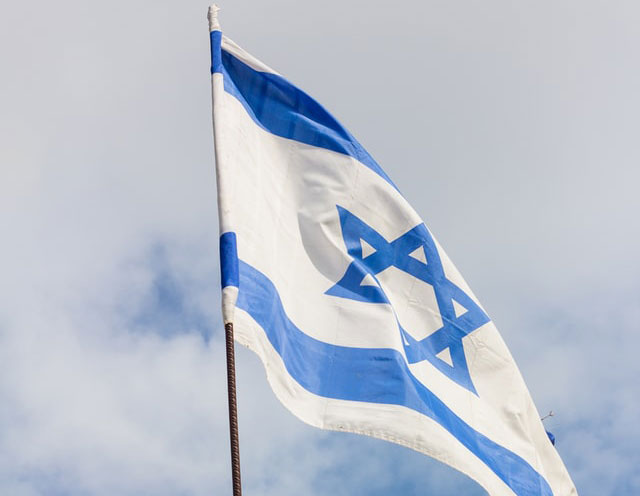Palestinian – Israel said Wednesday the US Senate approval of $13 billion in military aid sent a “strong message” to its enemies, with strikes pummelling Gaza in its war against the Palestinian militant group Hamas.
Fears are rising that Israeli Prime Minister Benjamin Netanyahu will soon follow through on repeated threats to send troops into the southern Gazan city of Rafah, where 1.5 million people are sheltering, many in makeshift encampments.
Israel says Rafah is the “last” major Hamas stronghold, but aid groups warn any invasion would create an “apocalyptic situation”.
Early Wednesday, hospital and security sources in Gaza reported Israeli air strikes in Rafah, as well as the central Nuseirat refugee camp.
“Everybody seems to be on a countdown to war across the largest displacement camp on Earth, which is Rafah,” Norwegian Refugee Council chief Jan Egeland told AFP.
Israel’s foreign minister on Wednesday thanked the US Senate for approving the military aid package hot on the heels of the House of Representatives.
“The Israel aid package that now passed both houses of Congress is a clear testament to the strength of our alliance and sends a strong message to all our enemies,” Israel Katz posted on social media site X.
US campus protests
The aid comes against a backdrop of growing protests against Israel’s conduct of its war against Hamas, which has turned vast areas of Gaza to rubble and sparked fears of famine.
Hundreds of students have been arrested in recent days at pro-Palestinian demonstrations on the campuses of leading universities in the United States, Israel’s top ally and military supplier.
The United Nations says “multiple obstacles” continue to impede the delivery of urgently needed aid to civilians desperate for food, water, shelter and medicine.
But Netanyahu has vowed to press on with a planned offensive on Rafah, on the besieged territory’s border with Egypt.
Citing Egyptian officials briefed on the Israeli plans, the Wall Street Journal said Israel was planning to move civilians from Rafah to nearby Khan Yunis over a period of two to three weeks.
Satellite images shared by Maxar Technologies showed tent camps that had recently been set up in that area.
The Journal reported that Israel would then send troops into Rafah gradually, targeting areas where Hamas leaders are thought to be hiding in a military operation expected to last six weeks.
The war began with an unprecedented Hamas attack on October 7 that resulted in the deaths of around 1 170 people, according to an AFP tally of Israeli official figures.
In retaliation, Israel launched a military offensive that has killed at least 34 183 people in Gaza, mostly women and children, according to the Hamas-run territory’s health ministry.
The Israeli army announced the death of a soldier in Gaza, raising its losses to 261 since the ground operation began.
Israel estimates that 129 of the roughly 250 people abducted during the Hamas attack remain in Gaza, including 34 it says are presumed dead.
Trapped in the sands
Public pressure has mounted on Netanyahu’s government to strike a truce deal that would secure the release of the remaining hostages.
Abu Obeida, spokesman for Hamas’s armed wing, said that “the enemy remains trapped in the sands of Gaza” and the hostages would “most likely” not return home soon.
On Tuesday, the United Nations rights office said it was “horrified” at reports of mass graves found at the Gaza Strip’s two biggest hospitals after Israeli sieges and raids.
Israel has repeatedly targeted hospitals during the war, accusing Hamas of using them as command centres and to hold hostages abducted on October 7. Hamas denies the accusations.
Gaza’s Civil Defence agency said nearly 340 bodies were uncovered of people killed and buried by Israeli forces at the Nasser Hospital in the southern city of Khan Yunis.
The Israeli army said claims it had buried Palestinian bodies were “baseless”, without directly addressing allegations that Israeli troops were behind the killings.
The army said that “corpses buried by Palestinians” had been examined by Israeli troops searching for hostages and then “returned to their place”.
UN human rights chief Volker Turk called for an “independent” probe into the deaths at the Nasser Hospital and Al-Shifa Hospital in Gaza City, noting the “special protection” awarded to medical facilities under international law.
AFP images from the scene showed numerous bodies under white shrouds in front of the bombed-out Nasser Hospital.
UN human rights office spokeswoman Ravina Shamdasani said some of the bodies found at the Nasser Hospital were allegedly “found with their hands tied and stripped of their clothes”, adding that efforts were underway to corroborate the reports.
The White House said it would discuss the matter with Israel.
“Obviously scenes of mass graves in general are deeply concerning but I don’t have anything that can confirm the veracity of those,” National Security Council spokesman John Kirby told reporters.
Call to renew UN agency funding
The European Union’s humanitarian chief Janez Lenarcic called on donor governments to fund the UN Palestinian refugee agency UNRWA, which has been central to aid operations in Gaza.
His comment came after a much-awaited independent report found that “Israel has yet to provide supporting evidence” for its claim that UNRWA employs “terrorists”.
The report did find “neutrality-related issues”, such as agency staff sharing biased posts on social media.
After the report was released, UNRWA chief Philippe Lazzarini called for an investigation into the “blatant disregard” for UN operations in Gaza, adding that 180 of the agency’s staff have been killed since the war began.
While some governments have renewed funding for the agency, the United States and Britain are among the holdouts.
The White House would “have to see real progress” before it restores funding, Kirby said.
The Gaza war has triggered violence across the region, with deadly cross-border exchanges on Tuesday between the Israeli army and Lebanon’s Iran-backed Hezbollah movement, a Hamas ally.
Follow African Insider on Facebook, Twitter and Instagram
Source: AFP
Picture: Unsplash
For more African news, visit Africaninsider.com


